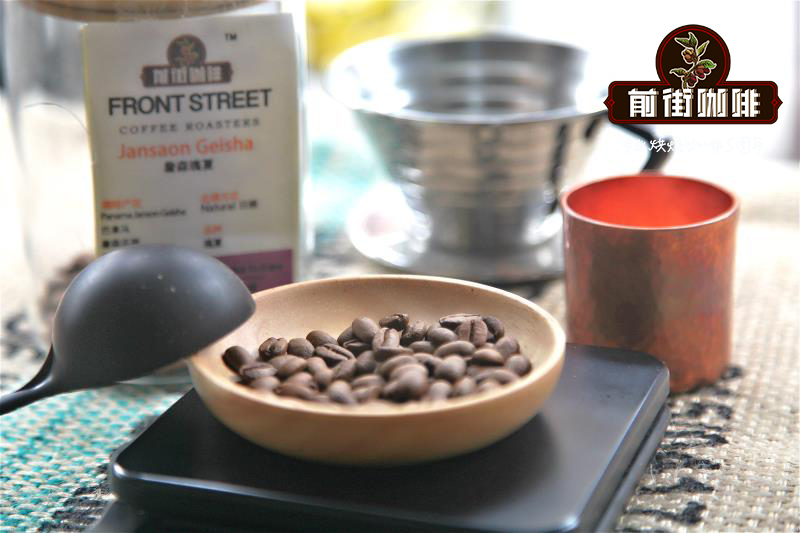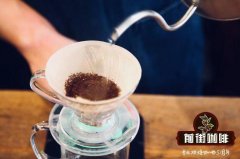What are the characteristics of Tika coffee beans? The flavor characteristics of Katim coffee beans

Professional coffee knowledge exchange more coffee bean information please follow the coffee workshop (Wechat official account cafe_style)
Brief introduction of Qianjie Iron pickup Coffee and Yunnan Katim Coffee
Typica: the oldest native variety in Ethiopia and southeastern Sudan. All Arabikas are derived from Tibika. The flavor is elegant, but the physique is weak, the disease resistance is poor, the fruit yield is less. Excellent manor beans such as the Blue Mountains of Jamaica, Manning of Sumatra and Kona of Hawaii all belong to Tibika. Tiebika top leaf is red copper, called red top coffee, Tibika belongs to Arabica.
Catimor: in 1959, the Portuguese mixed Brazilian Kaddura and Timo to develop a disease-resistant Katim / Katimo, which is now an important variety of commercial beans.
Typica is a subvariety of Arabica coffee, which was originally grown in Martinique, Central America, Jamaica, Kona region of Hawaii, Papua New Guinea and East Timor are the main coffee growing places of Tibica. In order to obtain more coffee production from high-quality Typica, Typica coffee varieties usually cross-breed with other species. Typica coffee is famous for its sweetness, and some of the best coffee in the world comes from the Typica coffee range, including Blue Mountain, Sumatra and Kona.
Typic raw beans are slightly warped at both ends and oval in appearance. The bean body is flat and thin from the side. Even if the altitude of the planting area is different, the thickness of the side of the raw bean will not be too different.
Catimor is widely popularized and planted in coffee growing areas of Yunnan Province, such as Dehong, Baoshan, Pu'er, Xishuangbanna, Lincang, Wenshan, Yuxi and so on.
In 1959, the Portuguese moved the Brazilian bourbon mutant Kaddura to East Timor to mix with Tim timor, who was of Robusta descent, and unexpectedly succeeded in breeding Kadim with disease resistance and super production capacity. As leaf rust affects coffee-producing countries around the world, with the help of international organizations, countries vigorously promote Katim to fight leaf rust and increase production capacity.
In Yunnan bean Katim, in Yunnan, the main treatment method is washing. Use a peeling machine to separate most of the pulp from the coffee beans, then guide the shelled beans to a clean sink, soak them in water and ferment to completely remove the residual pulp layer. Through washing, unripe beans and defective beans are selected because of buoyancy, and the fermentation process is easier to control, so the flavor is not mixed like sun beans, but shows obvious acidity, complexity and cleaner characteristics in the cup.
When boiled in a V60 filter cup, it smells nutty, with herbs, chocolate, caramel and a hint of acidity in the finish.
END
Important Notice :
前街咖啡 FrontStreet Coffee has moved to new addredd:
FrontStreet Coffee Address: 315,Donghua East Road,GuangZhou
Tel:020 38364473
- Prev

Does the iron pickup belong to Arabica? introduction to the flavor of Yunnan small grain coffee iron pickup
Professional coffee knowledge exchange more coffee bean information please follow the coffee workshop (Wechat official account cafe_style) the front street Yunnan Xiaoguo Mountain Coffee introduction Arabica Arabica now the world's total coffee production, Arabica species account for about 70%! It's growing all over the world! Arabica is only suitable for growing in cool tropical mountains and is easy to get sick! They all get sick and die easily!
- Next

Variety characteristics of Iron pickup Coffee Bean characteristics of flavor and taste in Lanshan coffee bean producing area
Professional coffee knowledge exchange more coffee bean information please pay attention to the coffee workshop (Wechat official account cafe_style) Qianjie iron pickup variety, Jamaica Blue Mountain Coffee introduction Iron card species is one of the oldest species of Arabica tree species, has derived many other varieties. The Ironpika bean is slender, the tree is tall, the fruit is oval, and the branches are slightly inclined. Four iron pickups
Related
- Beginners will see the "Coffee pull flower" guide!
- What is the difference between ice blog purified milk and ordinary milk coffee?
- Why is the Philippines the largest producer of crops in Liberia?
- For coffee extraction, should the fine powder be retained?
- How does extracted espresso fill pressed powder? How much strength does it take to press the powder?
- How to make jasmine cold extract coffee? Is the jasmine + latte good?
- Will this little toy really make the coffee taste better? How does Lily Drip affect coffee extraction?
- Will the action of slapping the filter cup also affect coffee extraction?
- What's the difference between powder-to-water ratio and powder-to-liquid ratio?
- What is the Ethiopian local species? What does it have to do with Heirloom native species?

